Our Instruments:
Each instrument is listed by name, while below is more detail about each instrument.
Among our instruments are:
Each instrument is listed by name, while below is more detail about each instrument.
Among our instruments are:
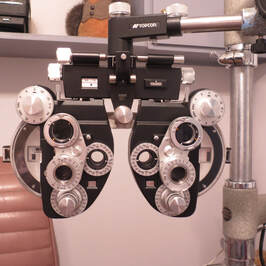
1. Topcon Vision Tester
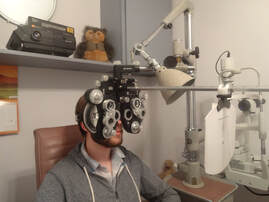
2. Near point rod with chart for near testing at the reading distance
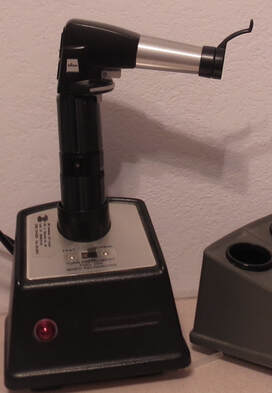
3. American Optical Indirect wide angle ophthalmascope
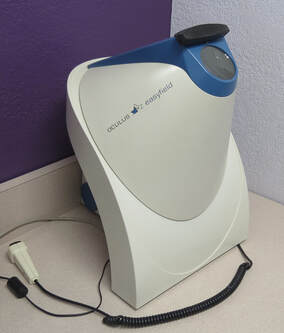
4. Oculus Easy Field automated vision field tester
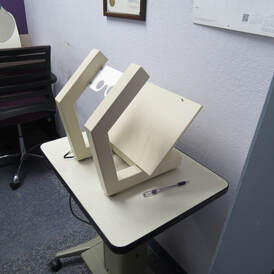
5. Photron manual vision field instrument
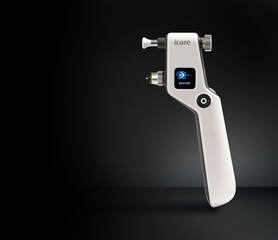
6. I-Care Tonometer
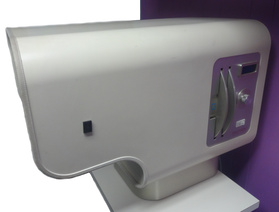
7. Photron Light therapy instrument
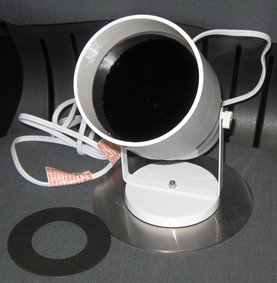
8. Home Light Therapy Instruments
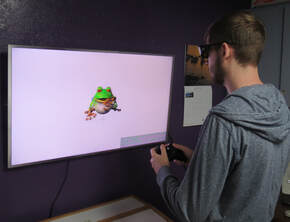
9. ST4 3D Vision Therapy Program
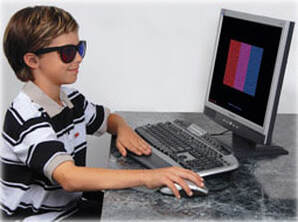
10. Home Computer Vision Therapy program ( HTS )
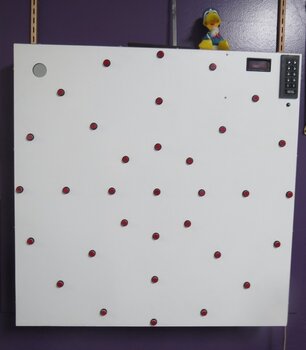
11. Wayne Saccadic Eye-movement training Computer
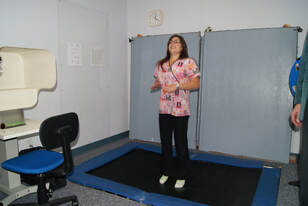
12. Trampoline
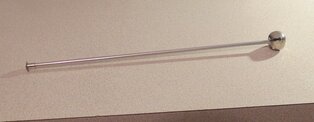
13. A jingle bell!
Yes, a simple jingle bell gives Dr. Henshaw more information than our high tech Oculus Easy field above
Yes, a simple jingle bell gives Dr. Henshaw more information than our high tech Oculus Easy field above
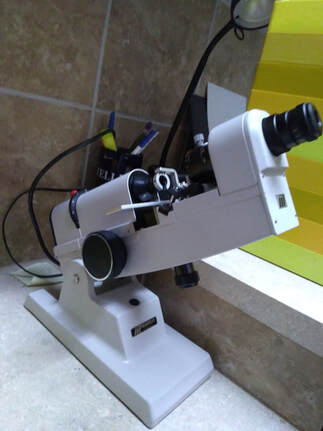
14. Lensometer

15. Pupillary Distance Ruler
|
|
16. Rotator
|

17. Translid Binocular Intraocular Stimulator (TBI)
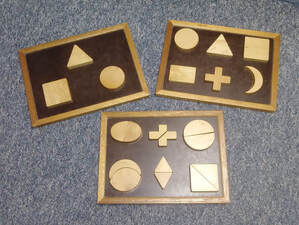
18. Colorado Puzzle Board developmental test
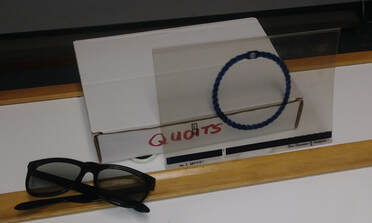
19. Quoits Ring Polaroid Stereopsis (3D)Trainer
|
|
20. Macular Integrity Tester (MIT)
|
|
|
21. Bob Pepper Concentration Profile
|
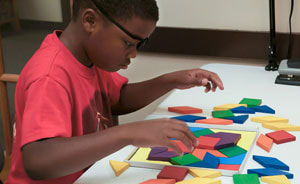
22. Parquetry Blocks and patterns
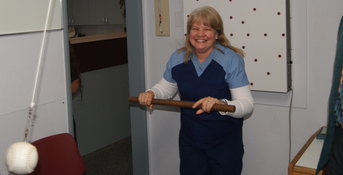
23. Pepper Bunt Ball
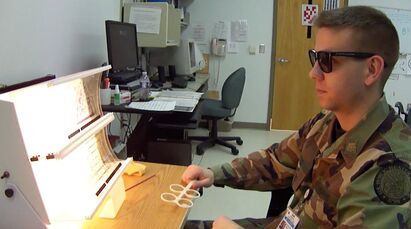
24. Double Light Box
|
|
25. Slant Board
|
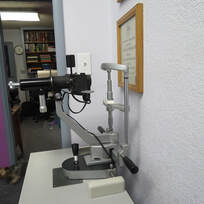
26. Haag-Streit Keratometer
For those who wish to take a closer look: The numbers match the pictures above
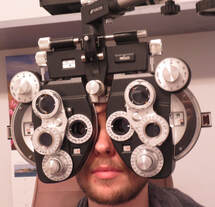
1. Topcon Vision Tester
This instrument determines what prescription is necessary for your glasses and contact lenses. Maybe you are nearsighted, farsighted, have astigmatism, or a blend of each.
Most of you may know which. Yet what else does the vision tester, also known as a phoropter, do?
This instrument determines what prescription is necessary for your glasses and contact lenses. Maybe you are nearsighted, farsighted, have astigmatism, or a blend of each.
Most of you may know which. Yet what else does the vision tester, also known as a phoropter, do?
It determines how you use your eyes as a team. Some tend to cross their eyes while some let them wander. Some can keep them as a team but struggle. It determines if you have trouble concentrating. It determines if you have amblyopia or anisometropia (one eye with a noticeably different Rx than the other). It can determine the degree of presbyopia and the exact lens you need to compensate for it. It determines whether your child has difficulty focusing while reading or operating digital devices. Many don’t realize this happens to children. You have to test for it to find it. Many docs don’t. It can determine if you are trending worse or improving in your basic prescription. It can determine if a vision processing condition may exist. It can determine if you are more comfortable with outdoor activities or bookish things.
Yes, it is a basic instrument; but the issue is whether it is used to its full extent. Generally only in a developmental optometrist’s office is it used to the full extent. Our Topcon knows Dr. Henshaw very well!
Yes, it is a basic instrument; but the issue is whether it is used to its full extent. Generally only in a developmental optometrist’s office is it used to the full extent. Our Topcon knows Dr. Henshaw very well!
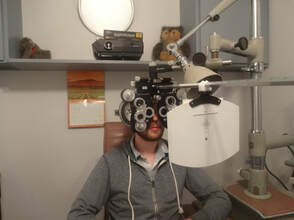
2. Near point Rod
The near point rod is used to test vision within arms’ length for tasks like reading, writing, and digital activities like a computer screen or a smart phone. For most eye docs it is used to test presbyopia for those of us more than 40.
Unfortunately most leave it out if you are less than 40. Some of the time if we test you when less than 40 we can make your transition into presbyopia easier and use lower power lenses. For kids it can be critical.
The near point rod is used to test vision within arms’ length for tasks like reading, writing, and digital activities like a computer screen or a smart phone. For most eye docs it is used to test presbyopia for those of us more than 40.
Unfortunately most leave it out if you are less than 40. Some of the time if we test you when less than 40 we can make your transition into presbyopia easier and use lower power lenses. For kids it can be critical.
It has long been falsely believed that kids can focus just well at near vision. That is probably true because most eye docs hang onto an old-fashioned notion more than 200 years old that presbyopia is the only near vision malady, and kids are just fine. Thus, no one tested, and sure enough, they did not find any problem. Developmental optometrists did the test and found many have difficulty either seeing clearly at near or sustaining it called accommodative infacility.
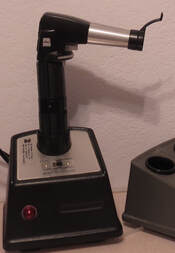
3. AO Indirect ophthalmoscope An ophthalmoscope is designed to look into your eye to determine if there may be signs of a disease. You can detect damage diabetes does to the eyes, high blood pressure, glaucoma, hardening of the arteries, and cataracts among others.
The AO Indirect ophthalmoscope is designed the same as cameras with wide angle lenses. It allows us to view more to the edge of the eye without dilating drops. It makes most dilation unnecessary.
The AO Indirect ophthalmoscope is designed the same as cameras with wide angle lenses. It allows us to view more to the edge of the eye without dilating drops. It makes most dilation unnecessary.
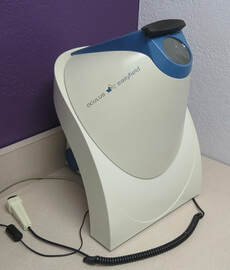
4. Oculus Easy Field automated vision field tester
This instrument tests your side vision and blind spot. It determines if there is any damage from stroke, heads trauma, or glaucoma.
It has a screening mode as well as a special mode just for glaucoma detection.
This instrument tests your side vision and blind spot. It determines if there is any damage from stroke, heads trauma, or glaucoma.
It has a screening mode as well as a special mode just for glaucoma detection.
The instrument is most commonly used to detect side vision loss and blind spot enlargements in automobile accidents. Yet it can detect other conditions like glaucoma, pituitary tumor, and stroke damage to the vision system. A neurologist informed one of our patients that our early detection literally saved her life when we spotted a pituitary tumor.
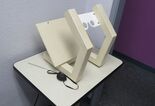
5. The Photron hand-held campimeter (A Sided vision tester) is designed to measure the extent of your side vision and blind spots. It gives a more realistic picture of your side vision than our Oculus Easy Field automated instrument. It acts as an excellent before and after recording when providing light therapy.
The hand-held portion refers to the technique of an assistant bringing a target from your periphery until you first see it while you look at a central point.
The hand-held portion refers to the technique of an assistant bringing a target from your periphery until you first see it while you look at a central point.
6. I-Care Tonometer
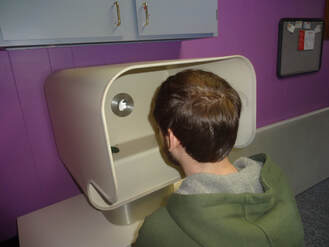
7. The Photron Light therapy instrument shines light of varying prescriptive colors into your eye.It is our main Light Therapy instrument. What is light therapy (Syntonics)? Light therapy is a scientific method of using prescriptive colored light to enhance varying vision conditions as well as various body conditions. The most common treatment is enhancing side vision and shrinking enlarged blind spots caused by auto accidents.. Treatment also includes head trauma (TBI (traumatic Brain Injury) click here to see Blake's Vision Therapy Story scroll down to Who have we helped with light therapy?), whiplash, and stroke.
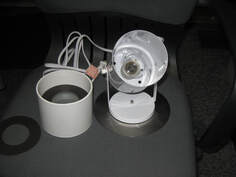
8. Home Light Therapy instruments These units perform the same treatment as the in - office Photron, but for patients at a distance or find the 10 consecutive in-office visits difficult to make.
Also the Photron adds flashing lights that patients with epilepsy are unable to tolerate.
Also the Photron adds flashing lights that patients with epilepsy are unable to tolerate.
|
9. The in-office ST4 3D Vision Therapy Program is probably our most elaborate instrument. You wear crystal-filtered lenses while watching a large-screen TV as you interact with a joystick. The ST4 is a sophisticated computer that allows control of each eye as you perform various fun tasks like racing cars, watching 3-D pictures float toward and away from you, moving your eyes with a moving target, and quickly moving your eyes from different targets on the TV screen.
It is used in tracking difficulty, esotropia (crossed eyes), exotropia (wall eyes), amblyopia, suppression, convergence insufficiency, and vision processing skills. |
|
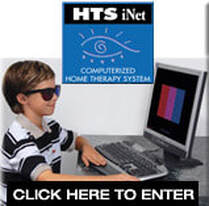
10. Home Therapy Computerized program (HTS)
Like the VTS4 computer program, there is something to do at home. It certainly does not have the bells and whistles of the in office VTS4, yet eye tracking, eye fixations, near focusing techniques, vergence and divergence activities, directionality, and visual memory skills can de done at a home computer. Although it can be used as the only therapy done we normally use it as a brush-up after office vision therapy is completed.
Like the VTS4 computer program, there is something to do at home. It certainly does not have the bells and whistles of the in office VTS4, yet eye tracking, eye fixations, near focusing techniques, vergence and divergence activities, directionality, and visual memory skills can de done at a home computer. Although it can be used as the only therapy done we normally use it as a brush-up after office vision therapy is completed.
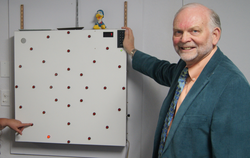
11. Wayne Saccadic Eye-movement training Computer
This is a computer device that can be programed to train many eye tracking skills. It is often used with athletes but is helpful to both kids and adults, not only in sports but learning and business skills enhancement.
This is a computer device that can be programed to train many eye tracking skills. It is often used with athletes but is helpful to both kids and adults, not only in sports but learning and business skills enhancement.
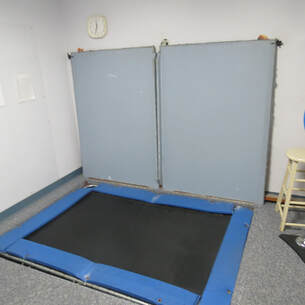
12. Trampoline
Why a trampoline in vision therapy? Certainly it is fun to jump on a trampoline whether a kid or not! Yet, like every other piece of equipment in the office; there is a purpose, and an important one. Just as there is a relationship between gravity and your blood vessel valves, there is with your vision. Our astronauts spending time free of gravity while in space are dizzy upon return. Meanwhile, cosmonauts spending the same time in space are not dizzy. No, it’s not the Vodka. Cosmonauts receive vision therapy before, during, and after their missions. If you want to improve your vision, the total body needs to be included. This is one of the tools where through innovation vision care we improve lives.
Why a trampoline in vision therapy? Certainly it is fun to jump on a trampoline whether a kid or not! Yet, like every other piece of equipment in the office; there is a purpose, and an important one. Just as there is a relationship between gravity and your blood vessel valves, there is with your vision. Our astronauts spending time free of gravity while in space are dizzy upon return. Meanwhile, cosmonauts spending the same time in space are not dizzy. No, it’s not the Vodka. Cosmonauts receive vision therapy before, during, and after their missions. If you want to improve your vision, the total body needs to be included. This is one of the tools where through innovation vision care we improve lives.
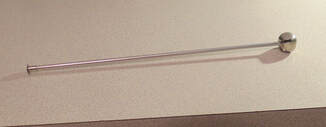
13. Jingle bell
Actually, the jingle bell is a fixation target mainly used to evaluate eye movements. Yet, it is used for so much more. It determines eye dominance, suppression, concentration, the power of a lens needed to alleviate eyestrain while reading, ability to shift fixation from near to far like looking from the car to the speedometer, and eyestrain while tracking.
Actually, the jingle bell is a fixation target mainly used to evaluate eye movements. Yet, it is used for so much more. It determines eye dominance, suppression, concentration, the power of a lens needed to alleviate eyestrain while reading, ability to shift fixation from near to far like looking from the car to the speedometer, and eyestrain while tracking.
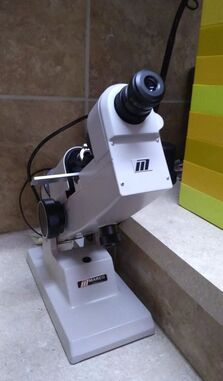
14. Lensometer
This device measures the power of lenses in glasses. It is not so much that we have this instrument. All offices have it. The issue is whether it is used or not. In our office that practices vision excellence it is most definitely used. Once glasses are delivered from our lab the glasses are measured for accuracy. Even though our lab has an accuracy of 95%, you don’t want to be the patient whose glasses are in the 5%. Thus, we check them. We also verify your glasses that were provided by your previous doctor. We have learned not to rely on the written prescription of your previous doctor as so many aren’t filled correctly. We also check your glasses that you had made with our prescription from another location. It is amazing how many are made incorrectly - well over 50%. Yet, many have not had us check their glasses. One patient had his prescription changed for the worse a year later from wearing our prescription made wrong by another location. Glasses made online are notorious for errors.
This device measures the power of lenses in glasses. It is not so much that we have this instrument. All offices have it. The issue is whether it is used or not. In our office that practices vision excellence it is most definitely used. Once glasses are delivered from our lab the glasses are measured for accuracy. Even though our lab has an accuracy of 95%, you don’t want to be the patient whose glasses are in the 5%. Thus, we check them. We also verify your glasses that were provided by your previous doctor. We have learned not to rely on the written prescription of your previous doctor as so many aren’t filled correctly. We also check your glasses that you had made with our prescription from another location. It is amazing how many are made incorrectly - well over 50%. Yet, many have not had us check their glasses. One patient had his prescription changed for the worse a year later from wearing our prescription made wrong by another location. Glasses made online are notorious for errors.
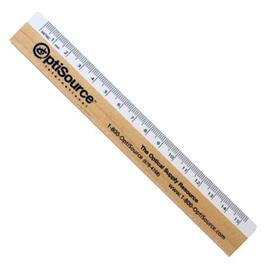
15. Why a simple ruler? It’s often called a PD stick, short for Pupillary Distance the distance from the center of one eye to the other. The pupil is selected as it is the center of your eye. How is the ruler used? 1. Measure the PD of a patient.
2. Measure the placement of a bifocal whether regular or a PAL 3. Verify the PD placement in your glasses returned from the lab 4. Verify the PD placement of your bifocal returned from lab 5. Verify that your bifocals are level when returned from the lab.
2. Measure the placement of a bifocal whether regular or a PAL 3. Verify the PD placement in your glasses returned from the lab 4. Verify the PD placement of your bifocal returned from lab 5. Verify that your bifocals are level when returned from the lab.
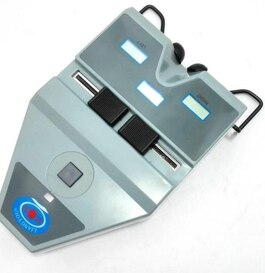
Why not a digital PD device? The digital devices are inaccurate, often grossly, because of parallax. A simple wooden ruler placed on the nose has minimal parallax error as it is so close to the eyes as you measure. Even if you tip the ruler slightly closer to one eye, the parallax error will be less than a quarter of a millimeter -insignificant in manufacturing your glasses. Yet the digital PD device’s eye piece is 12 to fourteen inches from the eye. My colleague’s digital device was 5mm off in measuring my PD. That would be like a 2 by four being six inches short for a carpenter. Imagine the result of your home with that inaccuracy.
A very simple piece of equipment, the PD ruler, can make a huge difference in the accuracy of your prescription glasses.
A very simple piece of equipment, the PD ruler, can make a huge difference in the accuracy of your prescription glasses.
|
|
16. Rotator A rotator is a device that moves a disc in a circle either clockwise or anti-clockwise at varying speeds.
|
Varying targets can be attached as you see in the opaque and clear backgrounds, while a large target can be attached as you see in the red, green, and black spiral target called a Wallach Ring. It allows your eyes to follow objects in a smooth rotation. The Wallach Ring target allows the sensation of depth. The rotator does not have to be rotated and using the small targets eye jumps and eye holds can be trained.
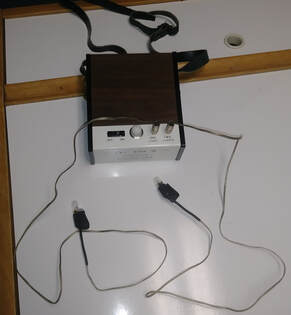
17. Translid Binocular Intraocular Stimulator (TBI)
This instrument breaks down suppression of vision, that is normally only in one eye.
It has a rapid flicker the prevents the eye from shutting down. Although the bulbs are placed against the eye lids, they do not heat up.
This instrument breaks down suppression of vision, that is normally only in one eye.
It has a rapid flicker the prevents the eye from shutting down. Although the bulbs are placed against the eye lids, they do not heat up.
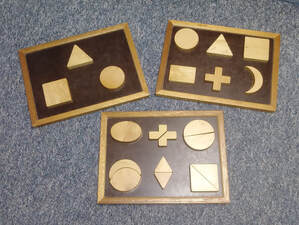
18. Colorado Puzzle Board developmental test
This test is part of testing used on young children to see if shape matching and form recognition is at their age level.
This test is part of testing used on young children to see if shape matching and form recognition is at their age level.
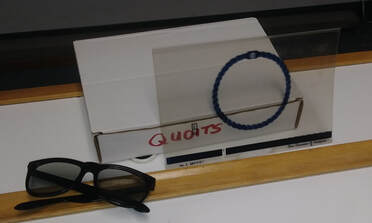
19. Quoits Ring Polaroid Stereopsis (3D)Trainer
Although it doesn't look it this is a high level device designed through two Polaroid opposite cancelling filters to cause your eyes to turn either inward or outward as a team while you observe the ring get larger as it move further away from you or smaller as it gets closer. It relies on size constancy for you to see the size changes. It is normally not introduced until after six office vision therapy sessions.
Although it doesn't look it this is a high level device designed through two Polaroid opposite cancelling filters to cause your eyes to turn either inward or outward as a team while you observe the ring get larger as it move further away from you or smaller as it gets closer. It relies on size constancy for you to see the size changes. It is normally not introduced until after six office vision therapy sessions.
|
|
20. Macular Integrity Tester (MIT)
We are able to determine if you are using the center of your eye(the macular that has the best visual acuity) when you aim your eye at a target. Often people with eye turns and especially amblyopia don't use the macula for aiming their eye. Recently it was used to detect macular degeneration. |
|
21. Bob Pepper Concentration Profile This is mainly used for testing although it is available for therapy. Have you ever wondered when your most productive time of the day is or where your downtimes are? This test will show you. Bob Pepper used this with the Portland Trailblazers basketball team to determine when to play their players.
|
|
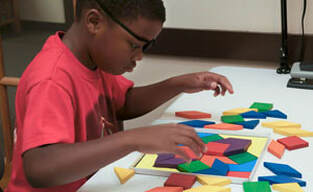
22. Parquetry Blocks and patterns
These blocks normally looked at as toys can be used to help reversals, shape recognition, visualization, visual closure, logic and reasoning, and eye-hand coordination.
These blocks normally looked at as toys can be used to help reversals, shape recognition, visualization, visual closure, logic and reasoning, and eye-hand coordination.
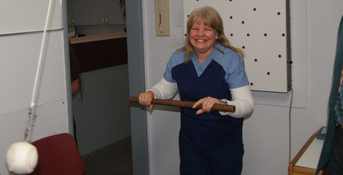
23. Pepper Bunt Ball
This is probably one of our most valuable vision therapy tools! It is a simple ball on a string. It is used far more than the most technically driven instruments of the Wayne Saccadic Fixator and the ST4 3D Vision Therapy Program.
This is probably one of our most valuable vision therapy tools! It is a simple ball on a string. It is used far more than the most technically driven instruments of the Wayne Saccadic Fixator and the ST4 3D Vision Therapy Program.
The smooth pendulum movement of the ball suspended from the ceiling is a smooth tracking device in real space. Your eyes turn inward and then outward as you track the ball. As you gently hit the ball with a large dowel stick, you are required to make exact depth perception decisions. /we add mental activities to drive eye movements into the subconscious.
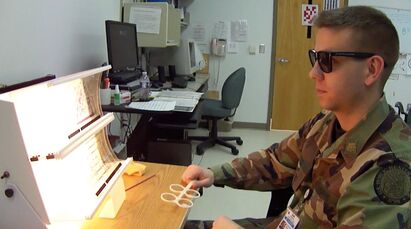
24. Double Light Box
This instrument simply holds Polaroid and red/green targets for you to first lok far away and then up close rapidly. while maintaining binocular vision.
This instrument simply holds Polaroid and red/green targets for you to first lok far away and then up close rapidly. while maintaining binocular vision.
|
25. Slant Board
Although used during VT to illustrate points about procedures, it is mainly used for eye-hand -body coordination as well as laterality and directionality. It was designed by Daryl Boyd Harmon for appropriate posture when making circles with both hands holding markers. |
|
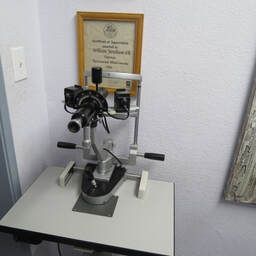
26. Haag-Streit Keratometer This instrument measures the outer surface (cornea) of your eyes. Although sophisticated and precise, it simply shines a light on you. It is non-invasive and absolutely painless. It is essential in contact lenses and high degrees of astigmatism. It helps us determine your prescription with no feedback from you. You simply look at a hole on the front surface of the instrument.